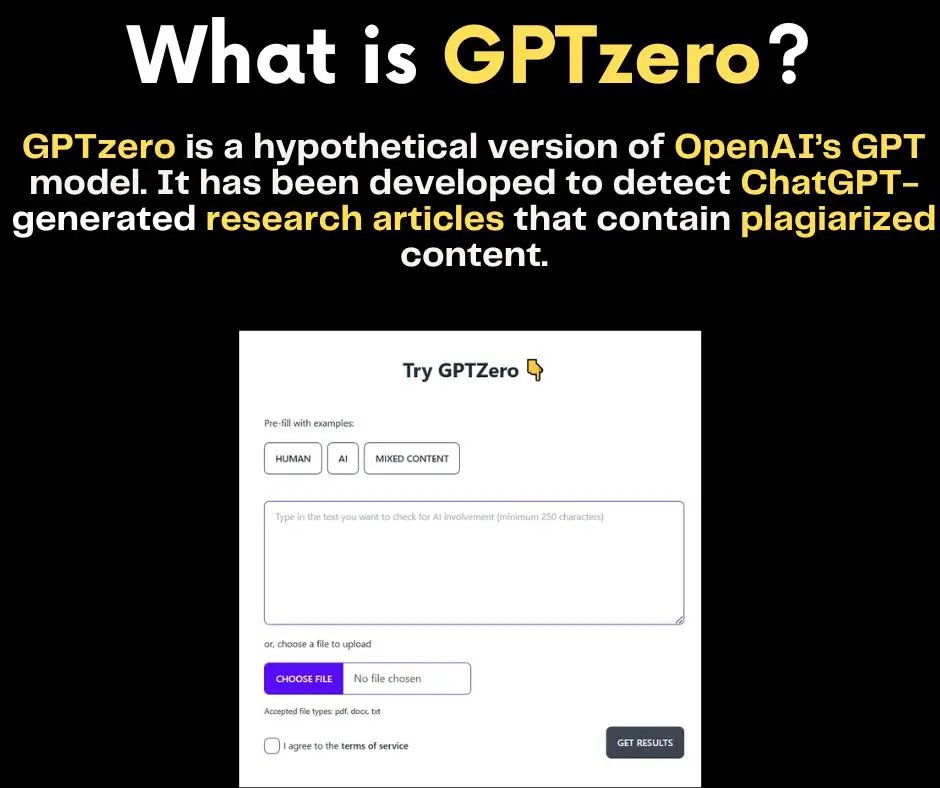This article will discuss GPTZero’s function as well as some of its drawbacks in this article.
The popular class of language models known as GPT (Generative Pre-trained Transformer) was created by OpenAI and has completely changed tasks involving natural language processing, including text completion, question answering, and translation.
GPT models are helpful for a variety of applications because they can produce human-like responses to different prompts after being trained on large datasets of text.
Thoughts have been expressed regarding the potential misuse of these models to produce spam, false news, and other undesirable content. To solve this problem, OpenAI has suggested GPTzero, a hypothetical version of their GPT model that has no pre-existing parameters or weights and can be trained entirely from scratch.
GPTZero
A computer science graduate named Edward Tian created GPTZero, an AI text analyzer program, to assist instructors in detecting plagiarized text from unique work. The tool analyses a text’s ambiguity and burstiness to identify whether it was manually or automatically created.

With predictions on a sentence, paragraph, and document level, GPTZero is a classification model that determines whether a document was authored by a large language model. With an emphasis on English prose, GPTZero was trained on a large, diverse corpus of human-written and AI-generated text.
Do all ChatGPT outputs detect by GPTZero?
A variety of AI language models, such as ChatGPT, GPT-3, GPT-2, LLaMA, and AI services based on such models are all supported by GPTZero.
How GPTZero Works?
An AI tool called GPTZero can be used to spot instances in which text was generated using AI. It offers a document-level score that indicates the likelihood that the entire document was created using AI. With this score, one can establish whether or not the text makes considerable use of artificial intelligence.
Sentence-level classification can be employed when there is a mix of text that was produced by AI and content that was written by humans.
It is important to note that just because one sentence has been marked as artificial intelligence (AI)-generated, the entire document may not be entirely or even partially so. Instead, the highlighted sentence shows the location in the text where a significant amount of the content was determined to be AI-generated.
The classifier’s objective is to identify cases that require additional investigation and awareness about the dangers of using AI to written work.
It can be helpful in education, certification, hiring, recruiting, social writing platforms, and circumstances where falsification of information or plagiarism may be a concern.
How GPTzero Detects ChatGPT-Generated Research Articles?
OpenAI’s ChatGPT is a sizable language model that can produce well-written research papers on a variety of subjects.
Unfortunately, some of the articles produced by ChatGPT have been found to include copied material, which can be troublesome for academics and researchers. In order to solve this problem, OpenAI created GPTzero, a detector model that can spot research articles produced by ChatGPT that are plagiarised.
GPTzero compares the text produced by ChatGPT with a big collection of well-known research publications to find overlaps and similarities. This is accomplished using a variety of methods, including machine learning algorithms, semantic analysis, and text similarity measurements.
If a ChatGPT-generated research paper and a recognised research article have a lot of similarities, GPTzero marks the article for further examination by human moderators. This enables academics and researchers to check the study article’s originality and legitimacy prior to quoting or referencing it.
Drawbacks of GPTzero
While GPTzero is a useful tool for spotting copied material in research publications produced by ChatGPT, it is not faultless.
The detection algorithm’s accuracy still has significant limitations, especially when it comes to picking up on paraphrasing and rewording of previously published information. GPTzero is new technology, so there is still a lot of possibility for advancement and improvement in the next years.




